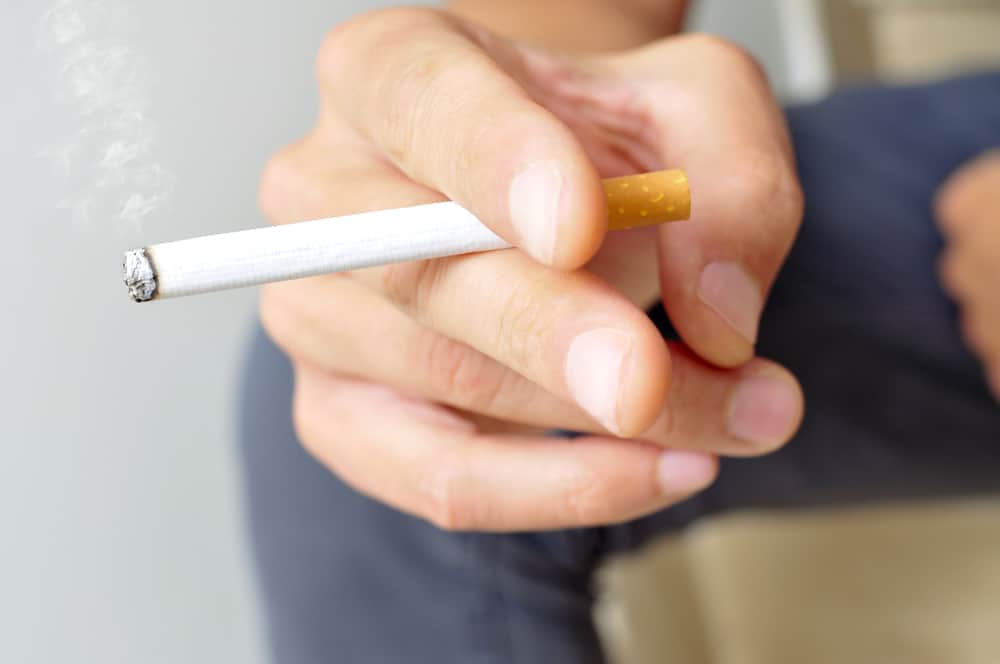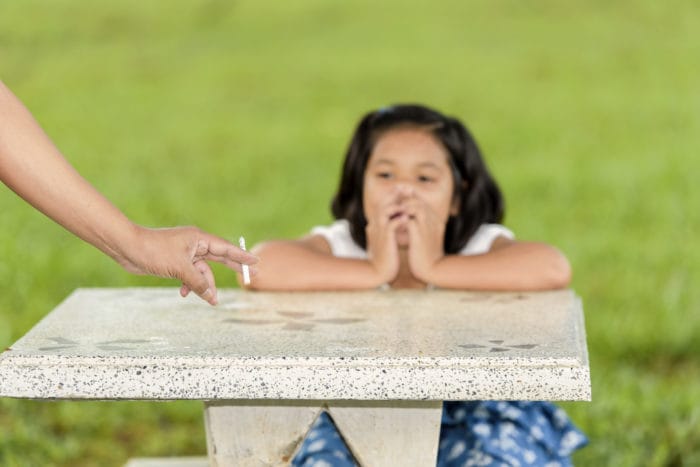Contents:
- Medical Video: Five Things That Help Smokers Quit : Psychology & Mental Health
- Why do children smoke?
- What are the dangers of smoking in children and adolescents?
- Tips for quitting smoking
- Starting from the intention in yourself to stop smoking
- The role of parents and the surrounding environment is also important
Medical Video: Five Things That Help Smokers Quit : Psychology & Mental Health
Today, smoking is no longer an adult habit. There have been many small children and teenagers who also joined in smoking. Dr. Theresia Sandra Diah Ratih, MHA, as the Head of Sub Directorate General of P2PTM Ministry of Health of the Republic of Indonesia explained that the number of Indonesian children and adolescents who smoke actively is increasing.
Dr. Sandra further said that the number of children and adolescents who became active smokers doubled from 24.2 percent in 2001 to more than 54 percent in 2016. The latest data from Riskesdas in 2013 showed that Jakarta, Bogor and Mataram were the three locations in Indonesia which has the most active population of children smokers (over the age of 10 years).
The increasing number of children and adolescents who smoke from year to year proves that there are still a few Indonesian children who are aware of the dangers of actual smoking on health. So, what causes children to smoke and how can we stop smoking?
Why do children smoke?
It is undeniable that when friends around him smoke, chances are that your child will also try smoking too. He did this to feel more acceptable with the scope of his association, without thinking much about his body's health. Dr. Sandra then added, not infrequently children also tend to often start smoking after seeing his father smoke at home. Why?
The age of children and adolescents is a critical age, where the brain is going through the biggest changes during the child's developmental period. Major changes mainly occur in the frontal lobe of the brain located on the front of the head. The frontal lobe is responsible for the reasoning process when making decisions, forming personalities, and carrying out intellectual processes (thinking) and interactions. Simply put, the frontal lobe helps you to think logically and regulate behavior.
Unfortunately, the part of the brain is responsible for deciding which of these good and bad things have not fully matured until the child is in his twenties. That's why children and adolescents are a group of people who are most vulnerable to environmental influences, especially those who are not good. This is also what makes children and teenagers often desperate to do something that is risky and tends to be careless, even dangerous, without thinking. Gradually, from the beginning, once tried instead it became difficult to stop.
What are the dangers of smoking in children and adolescents?
You may already be very familiar with the slogan "smoking can cause cancer, heart attacks, impotence, disorders of pregnancy and the fetus". This warning certainly does not only apply to adults. This health risk can also approach children who smoke. There is no difference in risk of complications between child smokers and adult smokers.
Smokers who start small or start when they are older are both at risk for heart disease, respiratory tract, cancer, and diabetes. One of the most common diseases caused by smoking is lung cancer. However, almost all types of cancer can be caused by cigarettes.
"Whatever it is (complications due to smoking), the risk will remain the same (at all ages)," said Dr. Sandra when met by the Hello Sehat team in Kuningan at the launch of the Young Health program collaboration program between AstraZeneca and the Indonesian Ministry of Health on Tuesday (8/14).
Even so, he continued that the smaller the age (someone) when starting to smoke, the more time and duration of exposure to cigarette poisons. So, the possibility of children being affected by smoking will occur faster than those who have just started smoking when they are adults. Basically, children and adolescents who smoke have worse health status than non-smokers.
In addition to the risk of chronic diseases, smoking habits since childhood can also interfere with oral health. Smokers who start from the age of children will experience faster and more tartar, and infections of the gums and mouth. Children smoking also can cause muscle and bone problems, which will cause many problems later in life.
Tips for quitting smoking
Quitting smoking isn't easy, but it doesn't mean it's impossible. Dr. Sandra emphasized that the role of yourself and those around you can help you stop smoking.
Starting from the intention in yourself to stop smoking
Even though it sounds cliched, the intention and determination to quit smoking must come from yourself. Tell yourself to quit smoking and commit to that sentence.
You can start slowly by reducing little by little the number of cigarettes you usually spend. If you feel like smoking, you can replace it by chewing gum or eating kuaci.
At the beginning of the plan to stop smoking, keep your heart away from people who often smoke. This is the simplest and most effective smoking cessation strategy to reduce your desire to return to smoking again. Join friends who don't smoke than go with other smokers. Because if you are still surrounded by smokers, determination can be shaken at any time and it is increasingly difficult for you to start stopping.
Don't forget to keep busy with various activities that can cancel your intention to smoke. For example, by taking extracurricular activities at school or sports club after school.
The role of parents and the surrounding environment is also important
As a parent, you are a strong influence on the lives of children and adolescents. So, you also have to exemplify that cigarettes really shouldn't be done by anyone. Ask what motivates him to smoke and give a clear understanding of the adverse effects of smoking on his health. Also provide an overview of diseases caused by smoking. Don't just prohibit children from smoking, without giving information as clearly as possible,
In addition, Dr. Sandra revealed that there must be external pressure that makes children and teenagers want to do something to stop smoking. For example, by making strict rules that make children have no space or opportunity to smoke. For example, make an agreement with the child to determine a definite date where they should start smoking. After applying the rules there must be no cigarettes and cigarette smoke that goes into the house. Apply this rule evenly to all family members and guests who come to the house.
You can also reward children if they are able to stop smoking, which makes them more motivated to quit completely.














